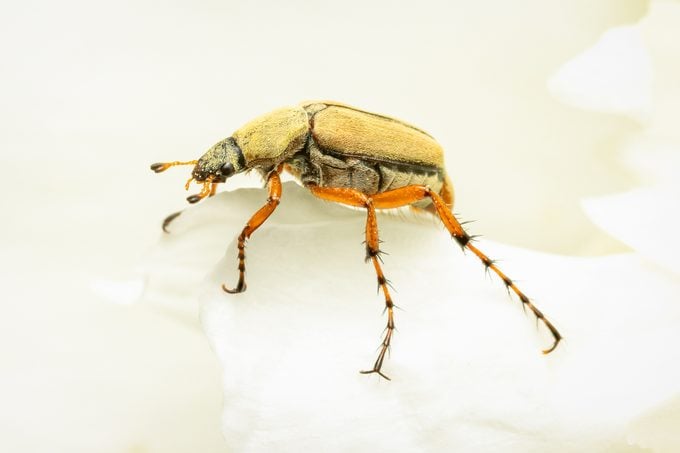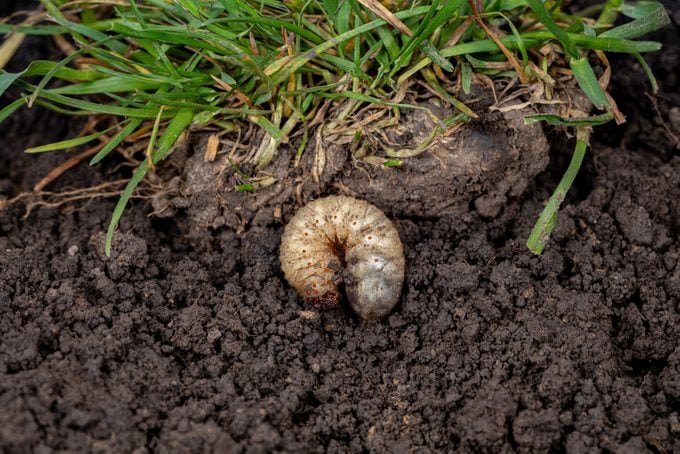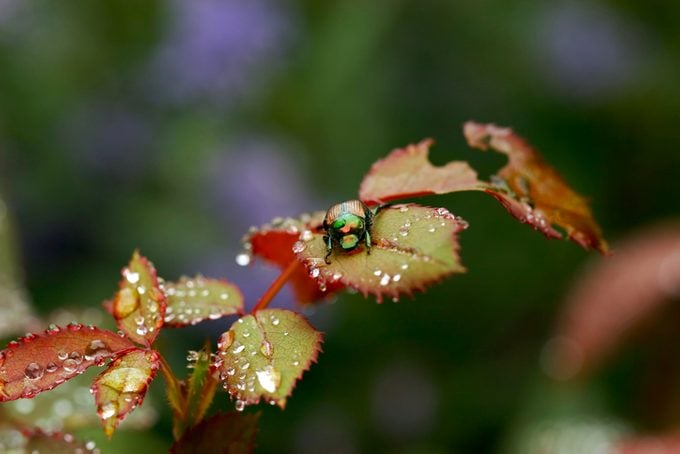How to Get Rid of Rose Chafer Beetles
Updated: Jul. 10, 2023
Are rose chafer beetles damaging your roses? Learn how to get rid of the beetles and protect your plants. Plus get tips for grub control.
Rose Chafer Beetle Control

“Do you have any tips for controlling rose chafers?” asks Birds & Blooms reader Mary Ann Marcusen of Wausaukee, Wisconsin.
Horticultural expert Melinda Myers says, “It’s often difficult to control problem pests like the rose chafer without harming the beneficial insects you want to attract to your garden. Handpicking is the safest option, but often impractical. Some gardeners use a small handheld vacuum to speed things up.
Try covering your plants or erecting a fence of cheesecloth around the plants before the insects begin feeding. Fences a few inches higher than the plants tend to discourage rose chafer feeding. Remove the cheesecloth when the rose chafers have finished their lifecycle.
Pyrethrin, a plant derived insecticide, is labeled for controlling this pest. Several applications will be needed. As always, read and follow label directions for best control and to minimize the negative impact on the environment.
Learn how to treat black spot and rose rosette disease.
Rose Chafer Larvae

Larvae of the rose chafer beetles, Japanese beetles and other beetles are fleshy, gray-white, wormlike creatures known as grubs. They measure about 1 inch (3 cm) long, with six legs and brown heads. Grubs curl into a circle when disturbed. They live in the soil, feeding on grass and weed roots.
Do roses need full sun or shade to grow best?
Control Japanese Beetle Grubs With Milky Spore

If you have a problem with grubs eating your grass and plants, chances are you also have a problem with Japanese beetles. You can solve both problems by just killing the grubs so that they don’t develop into beetles.
Although gardening outlets and big box stores are quick to sell fast-acting toxic chemicals to kill the grubs (and a lot of other less harmful insects), there is a perfectly fine natural remedy that will get rid of them for years to come. Milky spore causes Japanese beetle grubs to contract a disease that kills them. Other beneficial organisms are not harmed.
The only problem is that you have to be patient. Milky spore is slow acting. After you spread the granules on your lawn, it can take a year or more for the spore to become established in your soil. It may take several years of milky spore applications to accumulate enough bacteria to effectively control the Japanese beetle grubs. Milky spore is not an effective treatment for rose chafer grubs.
Avoid using other pesticides on the lawn and tolerate some grub damage during this time. Once the spore is established, it keeps working for a decade or more. Milky spore is not cheap. A bag of the granules runs about $40 to $50. But considering the length of the benefit, it’s a real bargain.
Next, find out what your rose bush is trying to tell you.




















